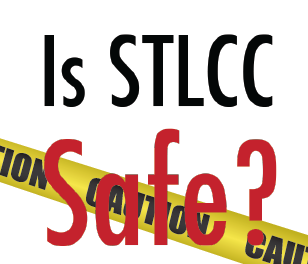Workshop explores how colleges can help students cope with violence and racism
 By: SPENCER GLEASON
By: SPENCER GLEASON
Editor-in-Chief
Faculty and staff from STLCC gathered at the STLCC-Forest Park Theatre on Aug. 29 for an open forum with speaker David Smith. Smith is a staff member of the United States Institute of Peace.
The workshop was planned following the Ferguson outbreaks of violence and protests as a result of the Michael Brown shooting. Smith spoke about how to engage students, faculty and staff in working toward peaceful solutions within the community.
“People are confused, upset, in despair, reacting and angry. And that’s kind of all over the place,” Smith said. “Part of our job as educators is to funnel that somehow. It’s to give that some sort of a process, so students can park it somewhere to know that it is valid and important and then to take that and pin it to something else, something that creates an outcome or solution.”
Before Smith spoke to faculty members, he talked to students about challenges they have faced, including exhaustion, racism and violence.
“Racism. Students recognize that,” Smith said. “It’s not just Michael Brown – it’s racism in the community. It’s institutionalized. It’s geographic racism.”
Smith warned students, faculty and staff that it is not possible to fix St. Louis County. “But we can control what we do at STLCC within our capacity,” he said.
As a result, it is important to recognize that the college will need to attend to people who are dealing with mental trauma.
“Our students are important resources that we often don’t look at,” Smith said to faculty and staff. “And often, it’s because we don’t get to know our students. One of the hardest things to do today is to get to know them all. The more time we get to spend with our students, the more we think about the ways that our students can help us out.”
Sometimes students are resistant to talking or don’t know how to start, he said. Smith recommended faculty, staff and administrators find ways to form trusting environments that promote learning to facilitate peace. “We need to learn from our students,” Smith said. “If we are risk takers, we need to go out of our comfort zone and we need to have our students see that.”










